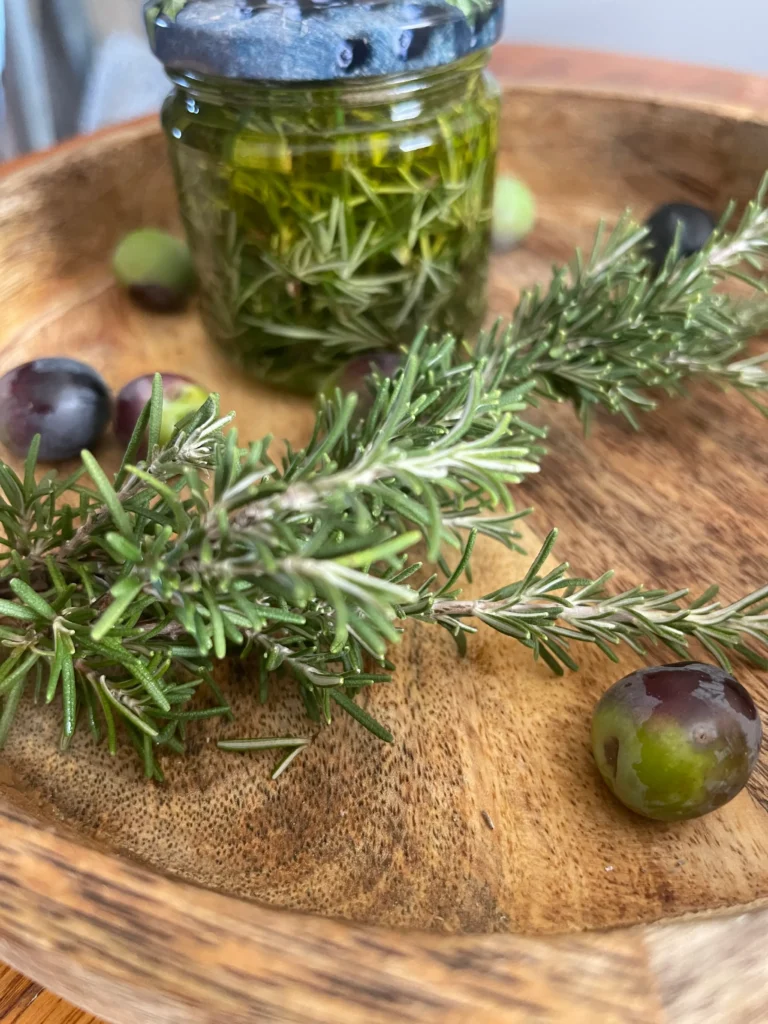How to Make DIY Rosemary Oil at Home: 4 Simple Steps to a Natural All-Rounder
How to Make DIY Rosemary Oil at Home: 4 Simple Steps to a Natural All-Rounder
How to Make DIY Rosemary Oil at Home: 4 Simple Steps to a Natural All-Rounder
How to Make DIY Rosemary Oil at Home: 4 Simple Steps to a Natural All-Rounder
27. Januar 2025
Feedback: 0
Have you ever stood in a health food store, looked at a tiny bottle of rosemary oil, and thought: “Wait… $15 for this?”
You’re not alone. Store-bought herbal oils can be surprisingly expensive — especially when all you really want is something pure, natural, and effective.
The good news? You don’t need to pay premium prices.
Making your own rosemary oil at home is incredibly easy, affordable, and often works even better than commercial versions. No artificial additives, no plastic waste, no brand markups — just nature, simplicity, and full control over what goes into your bottle.
And honestly? There’s something deeply satisfying about having a handmade wellness product on your shelf — one that smells amazing, works wonders, and costs pennies to make.
Why Make Rosemary Oil? Key Benefits You’ll Love
Rosemary (Rosmarinus officinalis ) isn’t just a delicious herb for roasted potatoes. It’s been cherished since ancient times as the “herb of remembrance” and valued in traditional medicine for its powerful properties.
Today, science confirms what healers have long known: rosemary is a true multitasker — great for hair, skin, cooking, and mental clarity.
By making your own homemade rosemary oil , you unlock all these benefits in one simple, natural infusion. Here’s why it’s worth it:
◉ For the hair: Promotes blood circulation in the scalp and can prevent hair loss. Bye-bye bad hair days!
◉ For the skin: Has anti-inflammatory and nourishing properties – perfect for dry or irritated skin.
◉ In the kitchen: Gives dishes an intense, aromatic note. Think of baked potatoes, salads or marinades. Yummy!
◉ To feel good: Its fragrance has an invigorating effect and helps to clear the mind.
How to Make Rosemary Oil: 4 Easy Steps
The best part? You only need two ingredients — both probably already in your kitchen or garden.
| Cook Time: | 48 min |
| Prep Time: | 10 min |
| Total Time: | 58 min |
| Category: | DIY & homemade |
| Cuisine: | Mediterranean. |
| Yield: | 8 oz |
| Method: | Cold extraction |
3. Combine rosemary and oil: Place the sprigs in a clean screw-top jar and fill it with your chosen oil until the rosemary is completely covered. A little tip: Gently pressing the sprigs ensures that the aromas develop better.
5. Leave to infuse: screw the jar tightly closed and place it in a warm, sunny place. Leave the oil to infuse for around two weeks. Shake the jar gently from time to time so that the essential oils are well distributed.
7. Strain: After the infusion time, filter the oil through a fine sieve or cloth to remove the solid components. Make sure that none of the plant parts remain in the oil to ensure its shelf life.
9. Bottling and storing: Pour the filtered oil into a clean, dark glass bottle. Stored in a dark and cool place, it will stay fresh for up to six months.
* High-quality oil: For example olive oil, almond oil or jojoba oil, depending on the desired application.
* Utensil:
* A clean screw-top jar with a lid
* A fine sieve or cloth for filtering
* A bottle for storage (preferably made of dark glass)
How to Use Your Homemade Rosemary Oil
Now for the fun part — putting your natural creation to work!
◉ For Hair: Massage 1–2 tablespoons of homemade rosemary oil into your scalp, leave it to absorb for 30 minutes or even overnight depending on your needs, then rinse thoroughly with a mild shampoo to stimulate blood circulation to the hair follicles, help reduce dandruff, and promote shiny, healthy hair.
◉ 💡 Tip: Combine it with a few drops of essential lavender oil for a deeply relaxing scalp massage.
◉ For Skin: Use the rosemary oil as a nourishing body oil after showering, gently massage it into areas with muscle tension or minor sprains, or add 2–3 tablespoons as a soothing boost to warm bathwater to pamper both skin and senses.
◉ ⚠️ Caution: Do not apply to open wounds or sensitive skin areas if you are prone to allergic reactions.
◉ In the Kitchen: Drizzle the rosemary oil over roasted potatoes, grilled vegetables, or feta cheese, use it in marinades for chicken and fish, or stir it into hummus and aioli — a simple upgrade with great flavor.
◉ ❗Important: Only use rosemary oil made with edible oils such as olive oil when using in cooking!
◉ For Wellbeing & Aromatherapy: Dab rosemary oil onto your wrists or temples to feel more alert, use it as a refreshing room scent in a diffuser or spray bottle, or place a few drops on a cloth to naturally keep moths away from clothing.
Tips and tricks: How to make your rosemary oil perfect
◉ Dry rosemary: Don’t you have any fresh rosemary? Dried will also work, but it has a little less flavor.
◉ Experiment: You can also add garlic, lemon zest or chili peppers to spice up your oil.
◉ Storage: Always work cleanly and use a dark bottle so that your oil stays fresh for a long time.
◉ Gift idea: Homemade rosemary oil in a pretty bottle is the perfect gift.
Do you want to use particularly high-quality oil? Why not use homemade oil?
You can find out how to make your own olive oil – for example by pressing or flavoring – in our detailed guide.
Safety instructions: What you should know
Even though rosemary oil is natural – a few precautions are important:
◉ ⚠️ Not suitable for pregnant women: Rosemary may have labor-inducing effects — it’s best avoided during pregnancy.
◉ ⚠️ Essential oil vs. homemade oil: Your homemade rosemary oil is not pure essential oil! It’s an infusion in a carrier oil — much milder and safer to use.
◉ ⚠️ Patch test: Before applying it to larger areas of skin, test it on a small spot (e.g., the inside of your wrist).
Conclusion: Doing it yourself pays off – at all levels
Making rosemary oil yourself is one of the easiest and most rewarding DIY projects you can start. You save money, protect the environment, avoid chemicals – and obtain a versatile natural product that no medicine cabinet should be without.
Whether as hair care, skin care, cooking ingredient or fragrance dispenser – this oil proves how powerful nature can be if you just give it a little time and attention.
Why wait any longer? Grab a bunch of rosemary and a bottle of olive oil now – and get started! In four weeks, you’ll have a high-quality product you can be proud of.
Sharing is encouraged, feedback is welcome – and if you want to stay tuned, just subscribe!
If you liked the recipe, pass it on to all the DIY fans around you. And if you have your own experiences with herbal oils – share them in the comments! We look forward to hearing how you use it.
Yours, Steffi & Marius
With love, nature and good taste.

Wir sind zwei deutsche Auswanderer und auf emigres-life nehmen wir Dich mit auf unsere Reise in ein neues Leben.
In unserem Projekt schwingt das Pendel meist in Richtung stressig oder chaotisch und weniger in Richtung tiefenentspannt.
Wenn du also wissen willst, in welches Fettnäpfchen wir als nächstes treten oder welche Hürden vor uns liegen und wie wir sie überwinden, dann bleib dran.
Nächster Blogpost
DIY Rosmarinöl: Das günstige Naturwunder in nur 4 einfachen Schritten


 Pin it!
Pin it!

